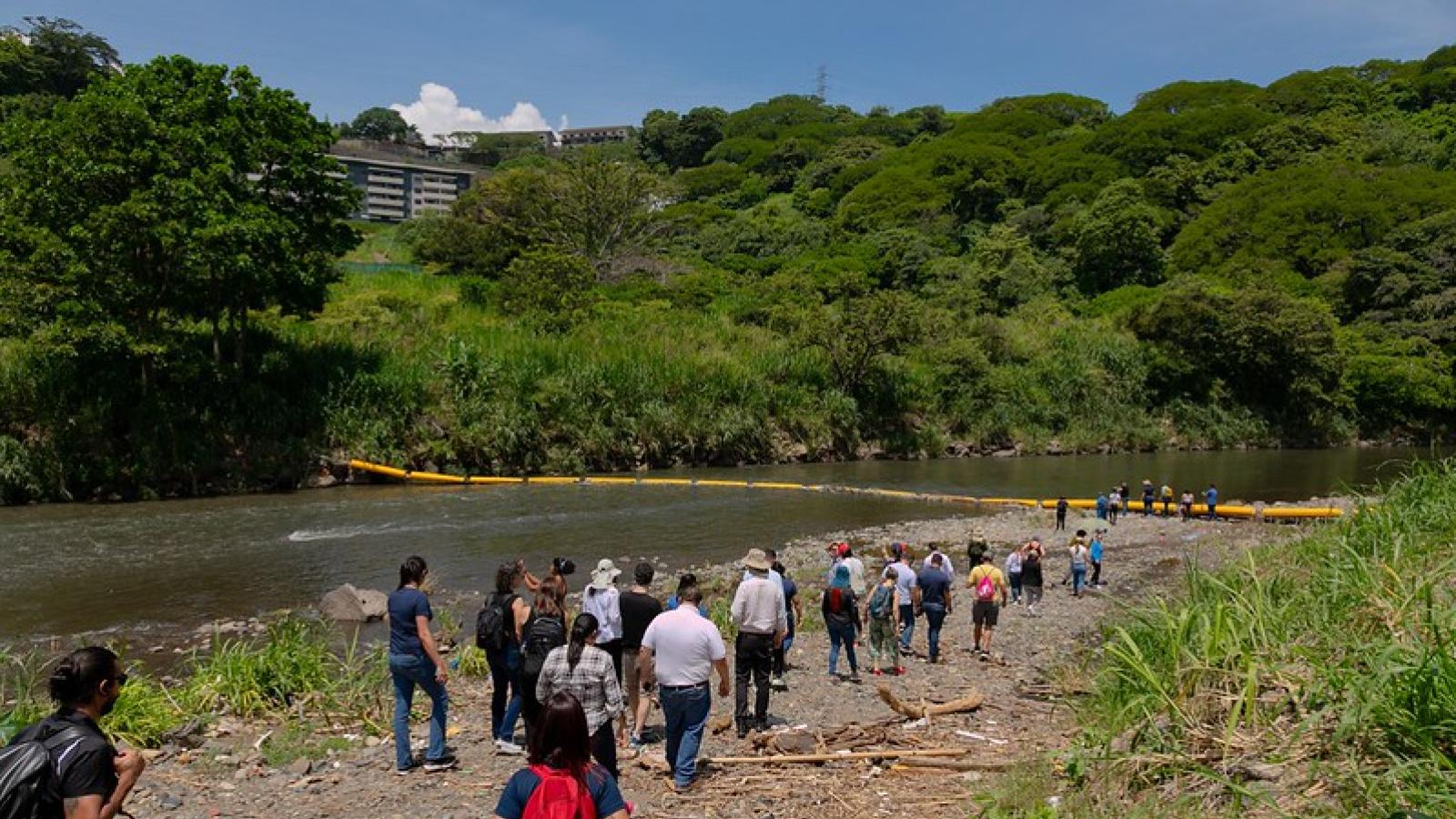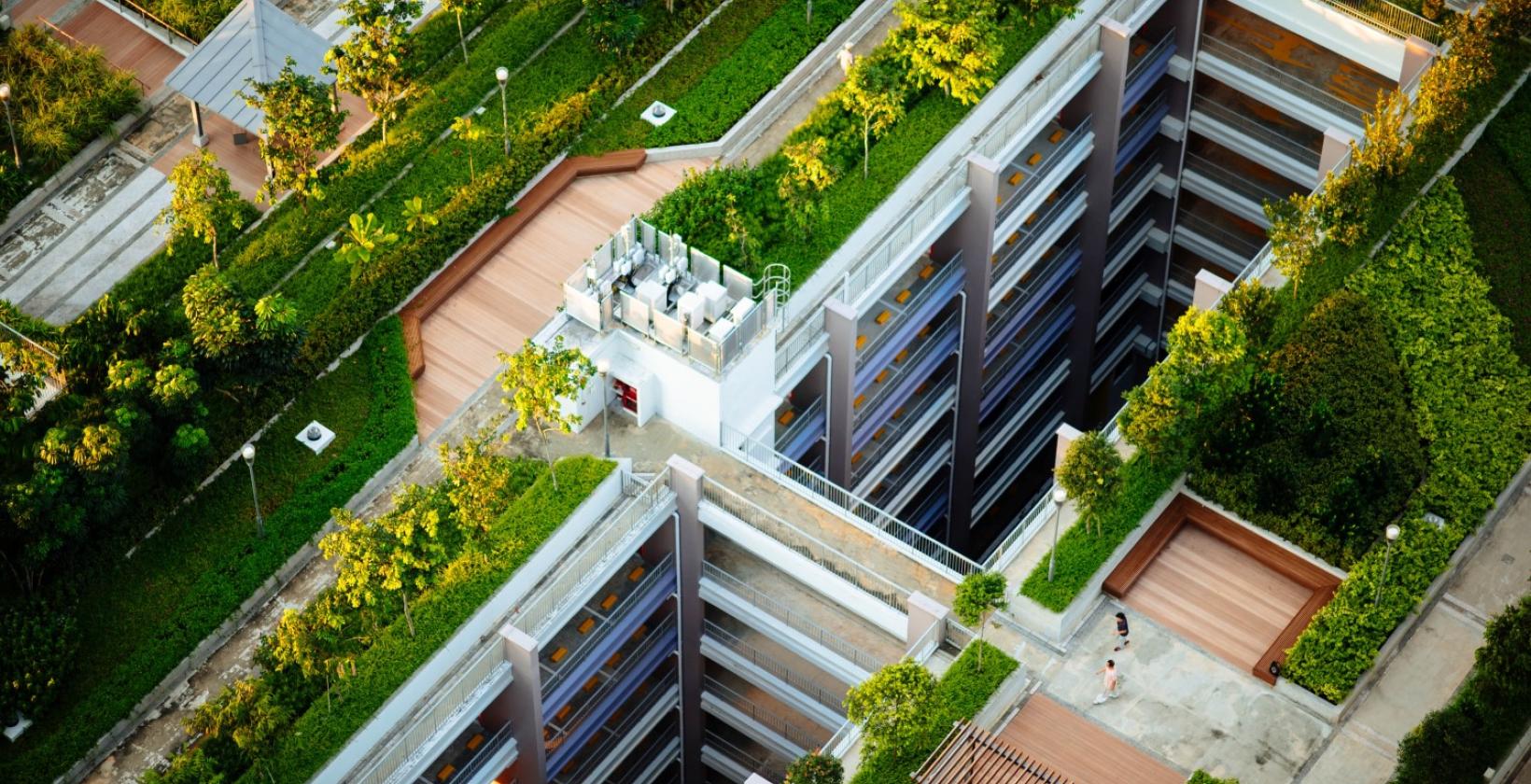Na Costa Rica, um projeto piloto em escala está capturando e reaproveitando resíduos plásticos antes que eles cheguem ao oceano
Uma parceria inovadora está promovendo uma solução simples e eficaz para eliminar os resíduos plásticos dos cursos d'água e transformá-los em um elemento-chave de uma economia circular.
Participantes da Costa Rica Academia da Cidade caminham pelas margens do Rio Virilla para ver a barreira de coleta de lixo (Imagem: Roberto Carlos Sanchez Photo).
A barreira amarela brilhante, com 78 metros de comprimento, se estende ao longo do rio Virilla, na Grande Área Metropolitana (GAM) da Costa Rica. Estamos no início de julho, no auge da estação chuvosa, mas os últimos dias têm sido anormalmente secos - um dos muitos efeitos emergentes da mudança climática na região. O rio está calmo e fica cerca de quatro metros abaixo de sua altura típica, de modo que Ana Yancy Arce, Gerente de Sustentabilidade e Comunicação da Corporation Pedregal, uma empresa de construção e manufatura com sede em Heredia, Costa Rica, conseguiu levar o grupo que participava do UrbanShift Academia da Cidade sobre Planejamento Integrado de Ações Climáticas e Soluções Baseadas na Natureza em San José até suas margens para explicar a importância da barreira que atravessa o rio.
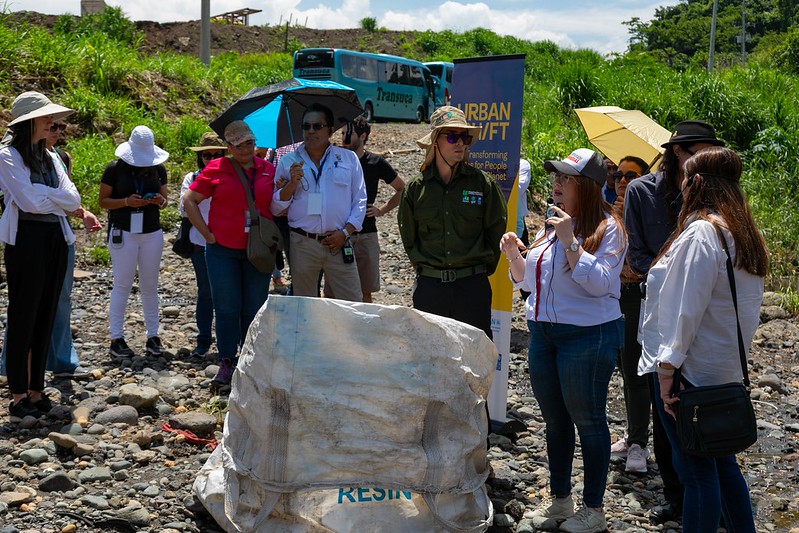
A barreira é simples, mas eficaz: foi projetada para capturar e recuperar resíduos e poluição plástica antes que eles desçam o rio e cheguem ao oceano. Uma cerca de malha de aço galvanizado fica suspensa abaixo da barreira flutuante e oscila de acordo com a altura do rio, garantindo que o mínimo de resíduos passe por ela. A cada dois dias, a equipe da Pedregal sai com um ancinho mecânico e puxa os resíduos que se acumulam contra a barreira e ao longo das margens do rio. Com apenas dois meses de existência, a barreira já reteve quase uma tonelada de resíduos plásticos. Até 2030, disse Yancy, a meta é recuperar 200.000 toneladas de resíduos em todo o país - por meio dessa barreira e de outras três propostas para rios na Costa Rica - e impedir que 80% dos resíduos originados no GAM acabem no oceano. "Sou obcecado pelo fato de o plástico não chegar ao oceano", disse Yancy. Como o rio Virilla é o rio mais poluído do GAM, ele é o local ideal para testar essa tecnologia e provar que ela pode ser ampliada de forma eficaz para mais cursos d'água em toda a Costa Rica. Uma meta inspiradora, considerando-se a crise planetária da poluição plástica, como é chamada pela ONU: os resíduos plásticos são onipresentes no ar, no solo, na água doce e nos oceanos, causando sérios impactos à saúde humana, sufocando a vida selvagem, danificando o solo e envenenando a água. As cidades são capazes de liderar muitas das soluções, incluindo serviços de coleta consistentes, práticas de descarte seguras e ambientalmente corretas e aplicação regulatória robusta para permitir o sucesso de várias intervenções em nível nacional e acordos de cooperação internacional.
Essa intervenção inédita na Costa Rica simboliza o compromisso do país com a remoção do plástico de sua paisagem, que é conhecida por sua forte proteção ambiental e de conservação. Uma série de parceiros se uniu para implementar esse projeto: O Projeto Paisagem Livre de Plástico do Programa das Nações Unidas para o Desenvolvimento está apoiando o esforço, juntamente com a Televisora da Costa Rica, o Consórcio CRDC-PEDREGAL, a OneSea Foundation, a Delfino, a Organização de Estudos Tropicais e o projeto Transição para uma Economia Urbana Verde (TEVU), apoiado pelo site Global Environment Facility. Durante o lançamento do Projeto Paisagem Livre de Plástico do PNUD, o representante residente do PNUD na Costa Rica, José Vicente Troya, disse que sua visão é que a Costa Rica seja líder na luta contra a poluição plástica. "Temos aliados formidáveis e queremos organizar uma campanha nacional na qual ninguém seja deixado para trás, participando de uma solução histórica que possa inspirar o resto do mundo", disse ele.
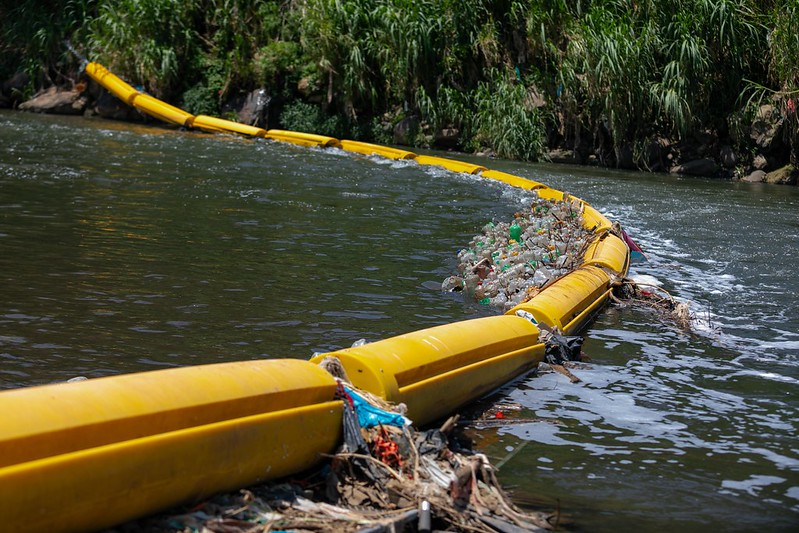
Sob o sol do final da manhã, Yancy apontou para as instalações da Corporation Pedregal, visíveis nas margens do rio. A barreira, disse ela, é apenas uma etapa da visão da parceria para acabar com o lixo plástico na Costa Rica. O outro elemento crucial é o pioneirismo em um esforço de economia circular para transformar resíduos plásticos em materiais úteis e reduzir a carga sobre os aterros sanitários do país. Na propriedade da Corporation Pedregal há uma instalação que transforma plástico sem valor em um material de areia sintética que pode ser incorporado a materiais de construção, como tijolos. "O problema com os plásticos sem valor era que ninguém os comprava", disse Yancy, "e agora estamos lhes dando valor". A Pedregal tem realizado visitas guiadas com empresas de construção para mostrar a elas o valor dos blocos, que são vendidos por um preço comparável ao dos materiais padrão, e incentivar a participação na economia circular. Se uma casa fosse construída inteiramente com blocos formados com sua areia sintética, disse Yancy, "seria como se injetássemos 4 milhões de garrafas plásticas em uma casa".
Embora qualquer pessoa na Costa Rica possa levar seu plástico sem valor para Pedregal para processamento, a barreira está fornecendo um novo fluxo de material. A equipe da Pedregal tem o cuidado de separar todo o plástico preso pela barreira, dividindo-o em plásticos sem valor, que podem ser processados em areia sintética para materiais de construção, e plásticos recicláveis. Para Yancy, isso representa uma oportunidade de fortalecer a educação e o envolvimento em relação aos resíduos plásticos, especialmente para os jovens da Costa Rica. Ela tem esperança de que, com o aumento da conscientização sobre a necessidade de evitar a poluição por plásticos, eles verão menos plásticos recicláveis presos na barreira.
À medida que os esforços para capturar e reaproveitar os resíduos plásticos aumentam na Costa Rica, Yancy está animada para mostrar que o país pode ser um modelo para outros que estão lidando com problemas semelhantes relacionados à poluição plástica. "Este é um teste", disse ela. "Queremos mostrar que isso pode ser replicado em qualquer outro lugar." À medida que a iniciativa progride, os parceiros desenvolverão métodos para quantificar os benefícios, desde a quantidade de plástico desviada do oceano até a redução associada na emissão de CO2 dos aterros sanitários locais. Trata-se de uma solução simples, mas com enormes implicações para o bem-estar das paisagens e da população da Costa Rica.
Para saber mais sobre o recente Academia da Cidade em San José, Costa Rica, visite a página do evento.
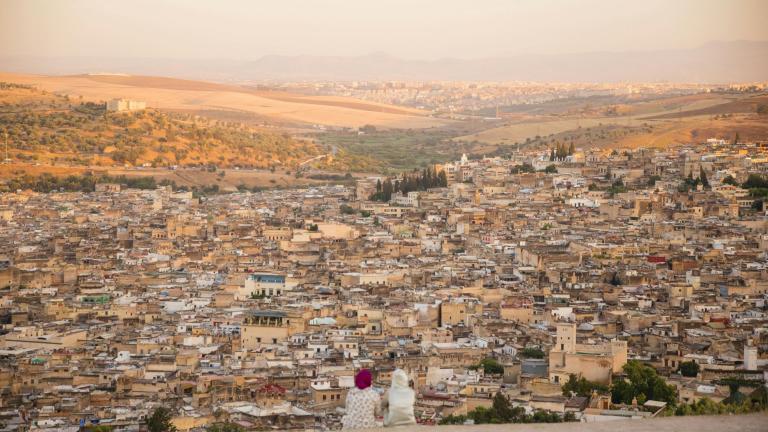
Liderança local abre caminho para mudanças sustentáveis no Marrocos
Como o Marrocos pode transformar seus recursos, resíduos e energia em motores de crescimento resiliente?
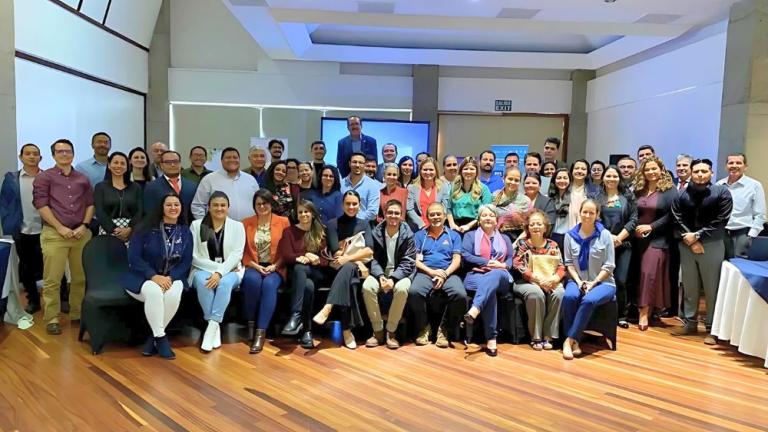
Como a Costa Rica está sendo pioneira em um futuro verde por meio do desenvolvimento sustentável
O primeiro Diálogo Nacional da Costa Rica abordou desafios desde o gerenciamento de resíduos até as inundações urbanas como parte do programa UrbanShift .
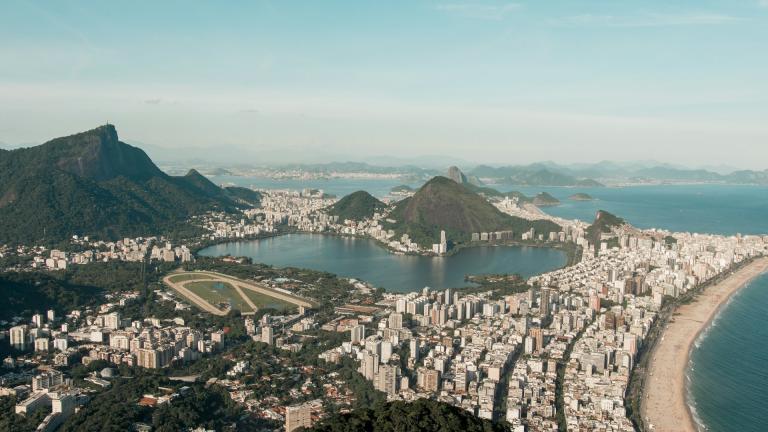
UrbanShift na COP30
UrbanShift participará de uma série de eventos durante o Fórum de Líderes Locais no Rio e a COP30 em Belém. Saiba mais aqui.
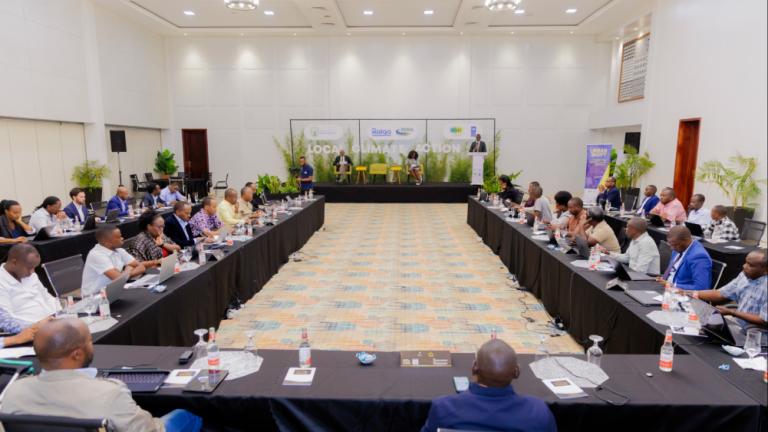
UrbanShift olha para trás: Sobre a importância de facilitar a colaboração em vários níveis
Durante o curso do programa UrbanShift , ICLEI liderou os Diálogos Nacionais-Locais e outros esforços para apoiar a colaboração aprimorada entre os níveis de governo para criar estratégias climáticas mais alinhadas e acionáveis.
